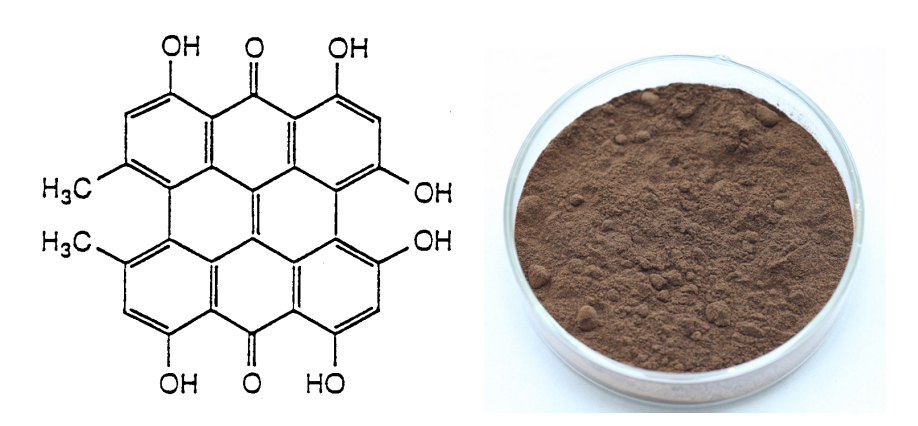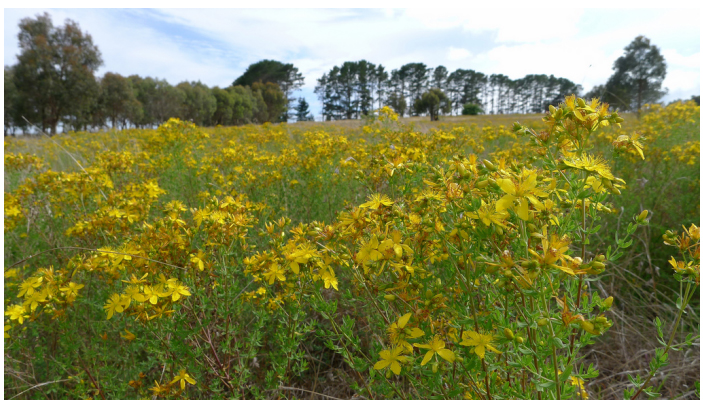China Wholesale for St John’s wort extract Factory in Paris
China Wholesale for St John’s wort extract Factory in Paris Detail:
[Latin Name] Hypericum perforatum
[Plant Source] From China
[Appearance] Brown fine powder
[Specifications] 0.3% Hypericin
[Particle size] 80 Mesh
[Loss on drying] ≤5.0%
[Heavy Metal] ≤10PPM
[Pesticide residue] EC396-2005, USP 34, EP 8.0, FDA
[Storage] Store in cool & dry area, keep away from the direct light and heat.
[Package] Packed in paper-drums and two plastic-bags inside.
[What is St. John's wort]
St. John’s wort (Hypericum perforatum) has a history of use as a medicine dating back to ancient Greece, where it was used for a range of illnesses, including various nervous disorders. St. John’s wort also has antibacterial, antioxidant, and antiviral properties. Because of its anti-inflammatory properties, it has been applied to the skin to help heal wounds and burns. St. John’s wort is one of the most commonly purchased herbal products in the United States.
In recent years, St. John’s wort has been studied extensively as a treatment for depression. Most studies show that St. John’s wort may help treat mild-to-moderate depression, and has fewer side effects than most other prescription antidepressants.
[Functions]
1. Anti-depressive and sedative properties;
2. Effective remedy for the nervous system, relaxing tension, and anxiety and lifting the spirits;
3. Anti-inflammatory
4. Improve capillary circulation
Product detail pictures:

Related Product Guide:
The consumer fulfillment is our primary goal. We uphold a consistent level of professionalism, top quality, credibility and service for China Wholesale for St John’s wort extract Factory in Paris , The product will supply to all over the world, such as: Jamaica, Afghanistan, Denver, As a way to make use of the resource on the expanding information and facts in international trade, we welcome prospects from everywhere on the web and offline. In spite in the top quality products we offer, effective and satisfying consultation service is supplied by our specialist after-sale service group. Solution lists and detailed parameters and any other info weil be sent to you timely for the inquiries. So please get in touch with us by sending us emails or contact us if you have any concerns about our firm. ou can also get our address info from our web site and come to our enterprise. or a field survey of our solutions. We're confident that we are going to share mutual results and build solid co-operation relations with our companions in this market. We're looking forward to your inquiries.
1. Asparagus
Asparagus is a favorite food for many. But you’ll really love that it’s a nonstarchy vegetable with only 5 grams of carb, 20 calories, and almost 2 grams of dietary fiber per serving. It’s especially high in an antioxidant called glutathione, which plays a key role in easing the effects of aging and many diseases, including diabetes, heart disease, and cancer.
2. Broccoli
This nonstarchy vegetable makes just about every superfood list, and it’s easy to see why. For starters, it has more vitamin C per 100 grams than an orange, plus it’s high in the antioxidant beta-carotene, which the body uses to make vitamin A. This dark green vegetable’s vitamin A power promotes healthy vision, teeth, bones, and skin. It is also rich in folate and fiber, all with minimal calories and carbs.
Broccoli is a member of the cruciferous vegetable family, which includes other veggies such as Brussels sprouts, cabbage, cauliflower, and bok choy. What makes this class of veggies unique is the high levels of sulfur-containing compounds known as glucosinolates. Perhaps better known for their potential anticancer effects, these compounds may also have a role in reducing heart disease risk and heart-related deaths.
3. Carrots
Cooked or raw, carrots are a healthy addition to any meal plan. While cooked carrots have the rich texture of starchy vegetables, such as potatoes, they are classified as nonstarchy veggies because they don’t contain a lot of carbohydrate. A 1-cup serving of raw carrots has about 5 grams of carb, as does a 1/2-cup cooked serving.
4. Kale
It’s no wonder the popularity of this leafy green, nonstarchy vegetable has soared in recent years: It’s tasty, highly nutritious, and a versatile ingredient in the kitchen. Kale is one of those green leafy veggies associated with a reduced risk of type 2 diabetes. People who ate the most green leafy vegetables were 14 percent less likely to develop diabetes than those consuming the least amounts.
Kale contains two pigments, lutein and zeaxanthin, that are beneficial for eye health. These two pigments seem to snuff out free radicals before they can harm the eyes’ sensitive tissues. They also appear to be protective against cataracts.
5. Red Onions
Don’t hold the onions – especially red ones. They not only add great color to salads, burgers, and sandwiches, but they also score higher in antioxidant power compared with their yellow and white cousins. Onions are also a good source of fiber, potassium, and folate – all good for heart health. Onions’ high flavonoid content also puts them on the map for cancer and cardiovascular research as well as other chronic diseases, such as asthma.
6. Spinach
Spinach is good for you. You probably already know that it’s loaded with vitamins and minerals. A 1-cup serving of raw spinach or 1/2 cup cooked provides over 50 percent of the daily value for folate and vitamin C. At the same time, a serving of this nonstarchy vegetable is super low in calories (7) and carbohydrate (1 gram). A ½-cup cooked serving contains just 22 calories and 4 grams of carb.
7. Red Peppers
Red peppers are actually green peppers that have been allowed to ripen on the vine longer. They’re loaded with nutrients, including the antioxidants vitamin C and beta-carotene. Like other red fruits and vegetables, red peppers deliver a healthy dose of lycopene. Vitamins A and C, along with lycopene, promote good health and reduce the risk of heart disease, diabetes, and some cancers.
This is one way of many to cook pumpkin seeds. The great thing about this activity is that you have a lot of room to experiment with your spices, the way you can cook it. You can Broil, Microwave, or pan roast them. You can even soak the seeds in salt water over night before you cook it.
Thank-you for all your comments and viewing the video. I have other videos on my YouTube page https://www.youtube.com/Johnthemousevideo
https://www.facebook.com/JohntheMouse
https://twitter.com/JohntheMouse
Cooperate with you every time is very successful, very happy. Hope that we can have more cooperation!







